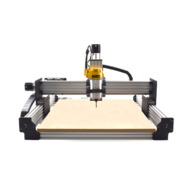WorkBee CNC Machine
Discussion in 'CNC Mills/Routers' started by Ryan Lock, Sep 21, 2017.
WorkBee CNC Machine
Discussion in 'CNC Mills/Routers' started by Ryan Lock, Sep 21, 2017.
The WorkBee is our latest CNC Machine and is a culmination of all our experience, feedback, and suggestions from selling the OX CNC Machine over the past 2 years. The WorkBee is capable of accurately cutting foams, woods, plastics or aluminum at depths greater than 25mm to 0.2mm accuracy or greater.
Page 15 of 20
Page 15 of 20
